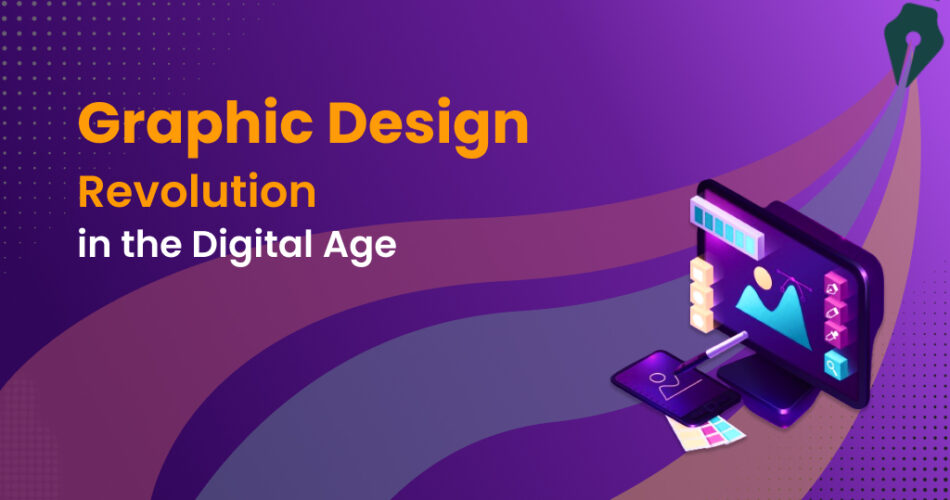
Introduction
In the ever-evolving landscape of digital marketing, graphic design has emerged as a powerful tool that shapes the way brands communicate with their audience. The integration of visually compelling elements into marketing strategies has not only enhanced brand recognition but also revolutionised the way messages are conveyed. This transformation is evident across various platforms, from social media to email campaigns, proving that graphic design is not just an aesthetic choice but a strategic necessity.
The Visual Revolution in Digital Marketing
The shift from traditional to digital marketing has brought about a significant change in consumer behaviour. With the internet’s vast expanse, marketers now have the opportunity to reach a global audience instantly. However, capturing and retaining this audience’s attention has become increasingly challenging. This is where graphic design steps in, offering a solution through visually engaging content that can cut through the noise and make a lasting impression.
The Power of Visual Content
Visual content is processed 60,000 times faster than text by the human brain, making it a critical component in digital marketing. High-quality graphics, infographics, and videos can quickly convey complex information, making it easier for consumers to understand and remember. This not only improves engagement rates but also boosts the overall effectiveness of marketing campaigns.
For instance, a well-designed graphic design poster can encapsulate a brand’s message in a single, eye-catching image. These posters, when shared across social media platforms, can go viral, significantly increasing brand visibility and reach. The use of vibrant colours, creative layouts, and compelling typography can evoke emotions and drive action, proving that graphic design is more than just decoration—it’s a persuasive tool.
The Role of Graphic Design in Branding
Branding is an essential aspect of any marketing strategy, and graphic design plays a crucial role in creating a cohesive and recognisable brand identity. Consistency in design elements such as logos, colour schemes, and typography helps establish a strong brand presence. This consistency not only builds trust with consumers but also makes the brand easily identifiable across various marketing channels.
Creative design agencies specialise in developing unique visual identities for brands. These agencies combine creativity with strategic thinking to produce designs that reflect a brand’s values and personality. By doing so, they ensure that every piece of visual content aligns with the brand’s overall messaging and goals.
Enhancing the user experience
In the digital age, user experience (UX) is paramount. A seamless and enjoyable UX can significantly impact consumer perception and behaviour. Graphic design contributes to UX by creating intuitive and aesthetically pleasing interfaces. Websites, apps, and digital platforms that are visually appealing and easy to navigate are more likely to retain users and encourage them to engage further.
For example, a well-designed website with clear navigation, visually appealing graphics, and interactive elements can enhance the user experience, leading to higher conversion rates. Graphic designers work closely with UX designers to ensure that the visual elements not only look good but also function effectively to provide a smooth user journey.
Social media and graphic design
Social media platforms are a hotbed for visual content. With the rise of platforms like Instagram, Pinterest, and TikTok, the demand for high-quality graphic design has skyrocketed. These platforms are inherently visual, and brands that leverage eye-catching graphics and videos can significantly boost their social media presence.
Graphic design posters, infographics, and animated graphics are particularly effective on social media. They can quickly convey information and capture the audience’s attention amidst the constant stream of content. Creative design agencies often develop specialised content for social media, ensuring that each post is optimised for engagement and shares.
Storytelling Through Visuals
Storytelling is a powerful marketing technique, and graphic design enhances this by providing a visual narrative. Infographics, for example, can tell a story through data visualisation, making complex information accessible and engaging. Similarly, video content can combine motion graphics, audio, and visuals to create a compelling narrative that resonates with the audience.
Brands can use graphic design to craft visual stories that highlight their journey, values, and impact. This not only humanises the brand but also creates a deeper connection with the audience. By using graphic design to tell their story, brands can differentiate themselves in a crowded market and build a loyal customer base.
The Future of Graphic Design in Marketing
As technology continues to advance, the role of graphic design in marketing will only grow. Emerging technologies like augmented reality (AR) and virtual reality (VR) offer new opportunities for immersive and interactive design experiences. Brands can use AR and VR to create engaging marketing campaigns that offer a unique and memorable experience for consumers.
Moreover, the integration of artificial intelligence (AI) in graphic design tools is streamlining the design process. AI-powered tools can automate repetitive tasks, suggest design improvements, and even create design elements, allowing designers to focus on more creative aspects. This not only increases efficiency but also opens up new possibilities for innovative design solutions.
Creative design agencies are at the forefront of these advancements, continuously exploring new technologies and techniques to stay ahead of the curve. By embracing these innovations, they can deliver cutting-edge designs that captivate audiences and drive marketing success.
Conclusion
Graphic design is undeniably revolutionising marketing in the digital age. Its ability to create visually compelling and strategically impactful content has transformed how brands communicate and engage with their audience. From enhancing the user experience to building strong brand identities, graphic design is an indispensable tool in the modern marketer’s arsenal.

